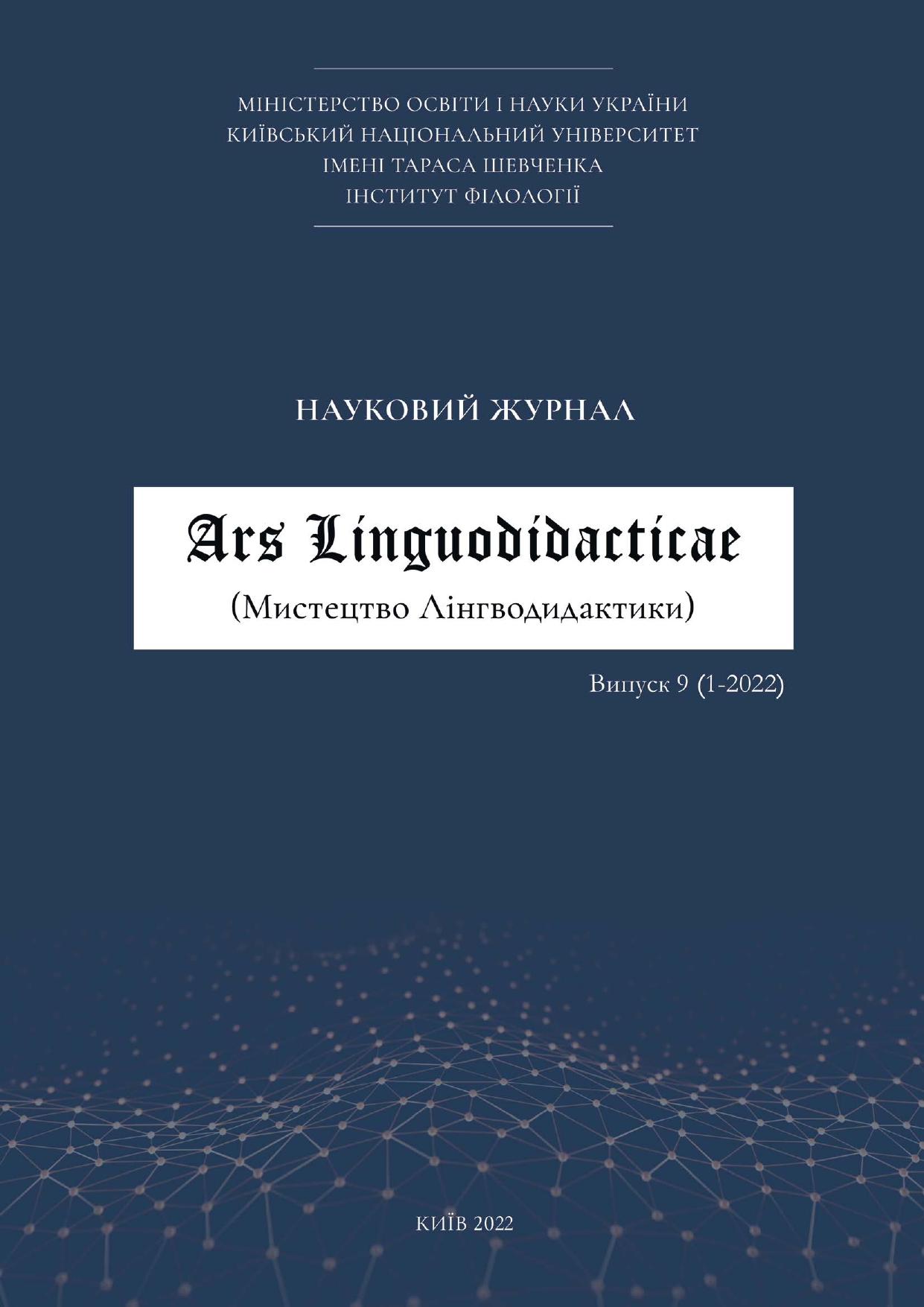Using Interactive Techniques to Build Writing Competence in Linguistics Majors
DOI:
https://doi.org/10.17721/2663-0303.2022.1.03Keywords:
writing skills, Linguistics majors, interactive techniques, stages of building writing competence, types of writingAbstract
Background. The article examines the effect of using interactive techniques to build writing competence in Linguistics majors. The review of literature on the topic under discussion has enabled making a conclusion that interactive techniques used in teaching writing skills appear an important teaching aid that enhances the development of natural abilities of the learners and increases cognitive interest in learning a foreign language. Theoretically, however, the problem is underresearched in the Ukrainian context. Therefore, the topicality of the research is ensured by the existence of the difficulties in using interactive techniques in teaching writing skills to Linguistics majors caused by the absence of specially formulated tasks for this purpose.
Purpose. The paper aims at investigating the use of interactive techniques to build writing competence in Linguistics majors.
Methodology relies on the critical analysis of the available research on the topic as well as of the authors’ experience in using interactive techniques in teaching writing.
Results. The article gives insight into the concept of "writing skills", psychological and linguistic characteristics of students majoring in Linguistics as well as into the process of building writing competence. It also describes the principles of using interactive techniques in building writing competence. The authors present a set of exercises to enhance the students’ writing competence. The exercises that rely on basic characteristics of interactive techniques are aimed at developing writing skills to construct, edit and correct the text at different stages of its creation. The system of exercises includes 4 subsystems, each of which consists of exercises to teach writing in accordance with one of the areas of communication. The authors analyze the components of interactive technology, namely, value, activity and process, which are gradually realized, respectively, at different stages of teaching writing.
References
Byriuk, O. (2003). Formuvannia sotsiokulturnoi kompetentsii maibutnikh uchyteliv zasobamy anhlomovnykh publitsystychnykh tekstiv. Visnyk ZhDPU, Vyp. 12, 157-159. Zhytomyr: Vyd. tsentr ZhDPU.
Kovalenko, O. (2006). Pro vyvchennia inozemnykh mov u 2006-2007 n.r. Metodychni rekomendatsii. Inozemni movy v navchalnykh zakladakh, №3, 6-12.
Kolodko, T. (2004). Pedahohichni umovy efektyvnoho formuvannia sotsiokulturnoi kompetentsii uchniv u protsesi vyvchennia inozemnoi movy. Naukovi zapysky: Zb. nauk. Prats, Vyp. 57. 54-63. K.: NPU.
Khomiak, A. (2008). Osobystisno-diialnisnyi pidkhid yak vazhlyva umova formuvannia komunikatyvnoi kompetentnosti uchniv u protsesi vyvchennia anhliiskoi movy. Molod i rynok, № 2 (37), 129-134.
Nikolaieva S. Yu., Bihich O.B. (2002). Metodyka navchannia inozemnykh mov u serednikh navchalnykh zakladakh. K.: Lenvit.
Pobirchenko, N. (2004). Interaktyvne navchannia v systemi novykh osvitnikh tekhnolohii. Pochatkova shkola, №10. 8-10.
Symonenko N. (2005). Interaktyvni metody v humanitarnii osviti. Upravlinnia shkoloiu, № 34, S.18-21.
Varzatska, L. (2005). Interaktyvni metody navchannia: linhvodydaktychni zasady. Dyvoslovo, № 2. 5-19.
Zhylko N.M. The United States of America (2003). Navchalnyi posibnyk do kursu «Krainoznavstva». Nizhyn: Vydavnytstvo NDPU.
Downloads
Published
How to Cite
Issue
Section
License

This work is licensed under a Creative Commons Attribution-NonCommercial 4.0 International License.
This work is licensed under a Creative Commons Attribution-NonCommercial 4.0 International License.
Copyright policy according to the terms of the license: Creative Commons "Attribution-NonCommercial" 4.0 International (CC BY-NC 4.0).
Authors who publish their articles in "Ars Linguodidacticae" (Open Access Journal) retain the following rights:
- The authors retain the copyright of their article and grant the Ars Linguodidacticae journal the right to first publish the manuscript of their article under the Creative Commons (CC BY-NC 4.0) Attribution License, which allows others to freely distribute the published work with mandatory reference to the author of the original work and first original publication in the Ars Linguodidacticae journal. An indication of the retention of the copyright of the work is provided on the title page of the article.
- The authors reserve the right to enter into separate contracts for the non-exclusive distribution of their article as published in Ars Linguodidacticae (e.g., placing the article in electronic libraries, archives and catalogs or publishing it as part of institute collections and monographs), provided that a full reference to the first original publication in Ars Linguodidacticae is given.
- The policy of the "Ars Linguodidacticae" journal allows and encourages authors to post a manuscript both before and during editorial processing, as this promotes productive scientific discussion and has a positive effect on the speed and dynamics of citing the article.
The editorial board reserves publishing rights to:
- the collated original articles and to the entire issue of the journal.
- the design of the journal and original illustrative and supplementary materials.
- the reprint reprints of the Journal in printed and electronic form.
The copyright policy is carried out according to the terms of the license: Creative Commons "Attribution-NonCommercial" 4.0 International (CC BY-NC 4.0).
For more information, please read the full text of the CC BY-NC 4.0 Public License.
Creative Commons Attribution-NonCommercial 4.0 International License.

